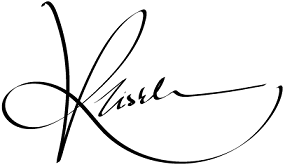The art world has long been celebrated for its creativity, innovation, and diversity of expression. Yet, behind the scenes, significant representation gaps persist, influencing who gets seen, recognized, and valued in the art industry. This blog explores these gaps, particularly focusing on gender and race inequalities, and provides insights into how these issues impact the broader.
Understanding Representation Differences in the Art Scene
Representation differences refer to the disparities in visibility and opportunities afforded to different groups within a field. In the art scene, this can manifest in various forms—from who gets exhibited and collected to who is featured in major art publications and galleries. Addressing these gaps is crucial for fostering a more inclusive and equitable art business.
Gender Gap and Gender Inequality in Art
One of the most prominent representation disparities in the art market is the gender gap. Historically, women artists have faced significant barriers to recognition and opportunities compared to their male counterparts. Despite contributing substantially to the arts, women in art often receive less visibility and fewer opportunities for exhibitions and sales.
This gender inequality has been partly attributed to long-standing societal norms and biases that have undervalued women’s contributions across various fields, including art. Efforts to address these disparities include promoting female artists, advocating for equal representation in exhibitions, and ensuring that women’s voices are included in critical art discussions.
Race Inequality and Its Impact on the Art Industry
Race inequality is another critical issue within the art realm. Artists from marginalized racial backgrounds often encounter systemic barriers that limit their visibility and success. The lack of diversity in galleries, museums, and art institutions can perpetuate a narrow representation of artistic voices and perspectives.
Addressing race inequity involves recognizing and dismantling these barriers, supporting artists of color, and promoting diversity within art institutions. This includes diversifying curatorial teams, broadening the scope of art collections, and creating more inclusive platforms for showcasing diverse artistic expressions.
Art and Feminism: Bridging the Gender Disparity
The intersection of art and feminism has played a pivotal role in challenging gender biases and advocating for greater representation of women in the art realm. Feminist art movements have highlighted the contributions of female artists and critiqued the male-dominated art establishment.
Through various feminist initiatives, there has been a concerted effort to address gender disparities, promote women in art, and highlight the importance of gender diversity in the . These movements have not only brought more women artists into the spotlight but also encouraged a broader rethinking of art’s role in reflecting and shaping societal values.
The and Representation
The plays a significant role in shaping which artists gain prominence and financial success. Representation variances in the can impact which artists are collected by institutions and private collectors, influencing their long-term career prospects.
Addressing these gaps requires a multifaceted approach, including increased support for underrepresented artists, more equitable practices in art sales and acquisitions, and greater transparency in how decisions are made. By fostering a more inclusive market, the art scene can better reflect the diversity of artistic voices and perspectives.
Addressing Representation variations: Moving Forward
To effectively address representation variations in the art scene, several steps can be taken:
Promoting Inclusive Practices: Art institutions and galleries can adopt more inclusive practices in their curatorial decisions and exhibitions. This includes featuring a diverse range of artists and ensuring equal opportunities for all artists, regardless of gender, race, or background.
Supporting Underrepresented Artists: Increased support for underrepresented artists through grants, residencies, and exhibitions can help bridge representation gaps. By providing these artists with more opportunities, the art realm can work towards a more balanced and inclusive landscape.
Advocating for Policy Changes: Advocacy for policy changes within art institutions and the broader art business can help address systemic inequalities. This includes pushing for more equitable representation in art awards, funding, and institutional leadership.
Encouraging Diversity in Art Education: Encouraging diversity in art education can also contribute to addressing representation disparities. By providing a more inclusive and supportive environment for art students from diverse backgrounds, the art scene can cultivate a richer and more varied pool of artistic talent.
Conclusion
Addressing representation disparities in the art scene is a crucial step towards creating a more equitable and inclusive art business. By acknowledging and actively working to overcome gender and race inequalities, promoting diverse voices, and fostering a supportive environment for all artists, the art scene can better reflect the richness and diversity of human creativity. As we move forward, it is essential for both individuals and institutions to commit to these changes, ensuring that art continues to be a space where all voices can be heard and celebrated.
Shop my artwork collection.
Check my digital artwork collection.


